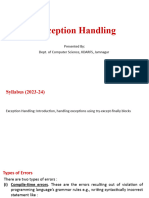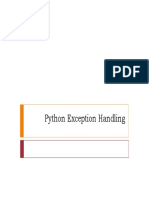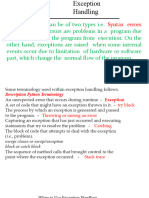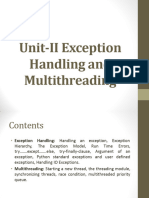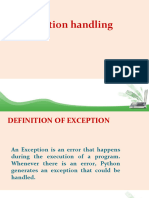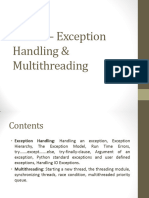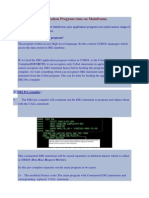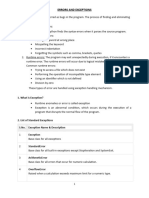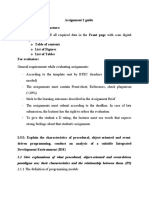0% found this document useful (0 votes)
33 views12 pagesException Notes, Homework
The document provides an overview of exception handling in programming, detailing various types of errors such as compile-time, run-time, logical, syntax, and semantic errors. It explains the concept of exceptions, how to handle them using try-except blocks, and the importance of the finally block for executing code regardless of exceptions. Additionally, it outlines common built-in exceptions in Python, their causes, and the benefits and drawbacks of exception handling.
Uploaded by
guhankasi.jCopyright
© © All Rights Reserved
We take content rights seriously. If you suspect this is your content, claim it here.
Available Formats
Download as PDF, TXT or read online on Scribd
0% found this document useful (0 votes)
33 views12 pagesException Notes, Homework
The document provides an overview of exception handling in programming, detailing various types of errors such as compile-time, run-time, logical, syntax, and semantic errors. It explains the concept of exceptions, how to handle them using try-except blocks, and the importance of the finally block for executing code regardless of exceptions. Additionally, it outlines common built-in exceptions in Python, their causes, and the benefits and drawbacks of exception handling.
Uploaded by
guhankasi.jCopyright
© © All Rights Reserved
We take content rights seriously. If you suspect this is your content, claim it here.
Available Formats
Download as PDF, TXT or read online on Scribd
/ 12








